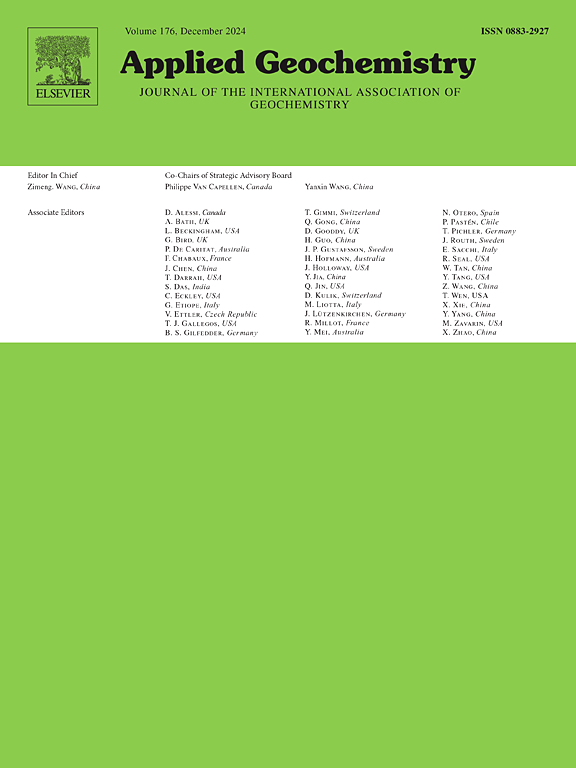Enrichment mechanisms of natural hydrogen and predictions for favorable exploration areas in China
IF 3.1
3区 地球科学
Q1 GEOCHEMISTRY & GEOPHYSICS
引用次数: 0
Abstract
Natural hydrogen (H2) is widely distributed and holds significant potential as future energy source. Global exploration and development efforts have identified many promising regions for natural H2 reservoirs. This review examines the origins, migration, and enrichment mechanisms of natural H2, focusing on the primary geological environments and genetic types of known high-concentration H2 reservoirs worldwide. We conclude that H2-rich natural gas tends to accumulate in specific geological settings, including tectonically active zones such as ophiolite belts at convergent plate margins and rift zones, as well as tectonically stable regions like the Precambrian continental basement. The exploration and development of natural H2 in China are at an early stage, but the Chinese continental geology shows promising conditions for high-concentration H2 resources. Based on the identified natural H2 occurrence patterns, we predict favorable exploration directions for natural H2 in China, particularly in the subduction zones of the Pacific Plate and the North China Plate-South China Plate, the collision zone between the Siberian Plate and the Tarim Plate, and the basins surrounding the Qiangtang-South China Plate and Gondwana Plate collision zone.
中国天然氢富集机理及有利勘探区预测
天然氢(H2)分布广泛,作为未来能源具有巨大潜力。全球勘探和开发工作已经确定了许多有潜力的天然H2储层区域。本文综述了天然氢气的成因、运移和富集机制,重点介绍了全球已知高浓度氢气储层的主要地质环境和成因类型。富h2天然气在特定的地质环境中富集,包括板块边缘和裂谷带蛇绿岩带等构造活动区,以及前寒武纪大陆基底等构造稳定区。中国天然氢气的勘探开发处于早期阶段,但中国大陆地质条件为高浓度氢气资源提供了良好的条件。根据已识别的天然H2赋存模式,预测了中国天然H2的有利勘探方向,特别是在太平洋板块和华北板块-华南板块的俯冲带、西伯利亚板块与塔里木板块的碰撞带以及羌塘-华南板块和冈瓦纳板块碰撞带周围的盆地。
本文章由计算机程序翻译,如有差异,请以英文原文为准。
求助全文
约1分钟内获得全文
求助全文
来源期刊

Applied Geochemistry
地学-地球化学与地球物理
CiteScore
6.10
自引率
8.80%
发文量
272
审稿时长
65 days
期刊介绍:
Applied Geochemistry is an international journal devoted to publication of original research papers, rapid research communications and selected review papers in geochemistry and urban geochemistry which have some practical application to an aspect of human endeavour, such as the preservation of the environment, health, waste disposal and the search for resources. Papers on applications of inorganic, organic and isotope geochemistry and geochemical processes are therefore welcome provided they meet the main criterion. Spatial and temporal monitoring case studies are only of interest to our international readership if they present new ideas of broad application.
Topics covered include: (1) Environmental geochemistry (including natural and anthropogenic aspects, and protection and remediation strategies); (2) Hydrogeochemistry (surface and groundwater); (3) Medical (urban) geochemistry; (4) The search for energy resources (in particular unconventional oil and gas or emerging metal resources); (5) Energy exploitation (in particular geothermal energy and CCS); (6) Upgrading of energy and mineral resources where there is a direct geochemical application; and (7) Waste disposal, including nuclear waste disposal.
 求助内容:
求助内容: 应助结果提醒方式:
应助结果提醒方式:


